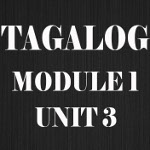To get my full Bidaya Buddy course click here
Last week we kicked off my first of a new series of posts here on LiP, Bisaya Buddy. These are intended to be miniature lessons in the Bisaya language, things that will help you in daily conversation so that you can say a few words in Bisaya.
I was really very happy after my post last week because I really got a lot of nice feedback. Many people also subscribed to my YouTube channel, which is also greatly appreciated. If you like these lessons, be sure that you subscribe to my YouTube channel, and after clicking the subscribed but, also click on the little button with a bell symbol on it, because then you will be notified when I have new posts.
In today’s edition of the Bisaya Buddy minicourse, we will be looking at personal pronouns, we will look at how to say things like you, I, he, or they. There will be a little bit more in the way of personal pronouns next week, but these are a good start, and a great building block to help you be able to speak a little bit of Bisaya. In almost everything you say you will be referring to somebody, so these words will be a great way to start you off.
Some people who are more interested in Tagalog than Bisaya will be happy to hear that I will also start doing many Tagalog lessons soon. I have worked out a way that I can do this, even though I do not speak Tagalog fluently. Watch this space, probably within the next week I will have my first mini Tagalog lessons.
Thank you for watching my video, and good luck with learning the language! Learning how to speak Bisaya (or Tagalog) can really help improve your life in the Philippines, make you a happy ex-pat, and a successful part of society here. I know this for sure, because I’ve learned the language, and I know how my life has changed.



